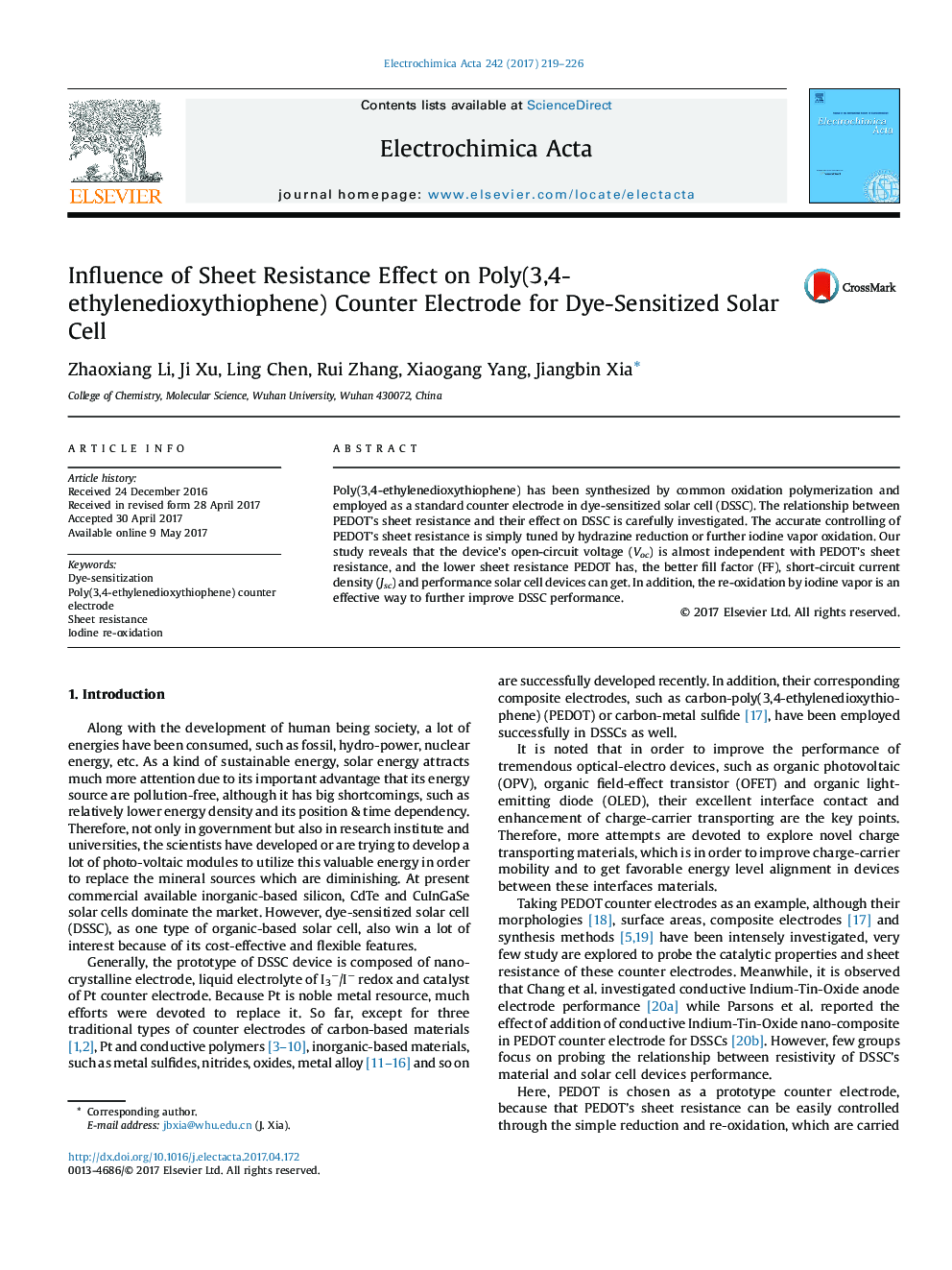| Article ID | Journal | Published Year | Pages | File Type |
|---|---|---|---|---|
| 6471189 | Electrochimica Acta | 2017 | 8 Pages |
Poly(3,4-ethylenedioxythiophene) has been synthesized by common oxidation polymerization and employed as a standard counter electrode in dye-sensitized solar cell (DSSC). The relationship between PEDOT's sheet resistance and their effect on DSSC is carefully investigated. The accurate controlling of PEDOT's sheet resistance is simply tuned by hydrazine reduction or further iodine vapor oxidation. Our study reveals that the device's open-circuit voltage (Voc) is almost independent with PEDOT's sheet resistance, and the lower sheet resistance PEDOT has, the better fill factor (FF), short-circuit current density (Jsc) and performance solar cell devices can get. In addition, the re-oxidation by iodine vapor is an effective way to further improve DSSC performance.
Graphical abstractPoly (3,4-ethylenedioxythiophene) has been employed as a standard counter electrode in dye-sensitized solar cell (DSSC). The device's open-circuit voltage (Voc) is almost independent with PEDOT's sheet resistance and the lower sheet resistance PEDOT has, the better fill factor (FF), short-circuit current density (Jsc) and performance solar cell devices can get. The re-oxidation by iodine vapor is an effective way to further improve DSSC performance.Download high-res image (141KB)Download full-size image
